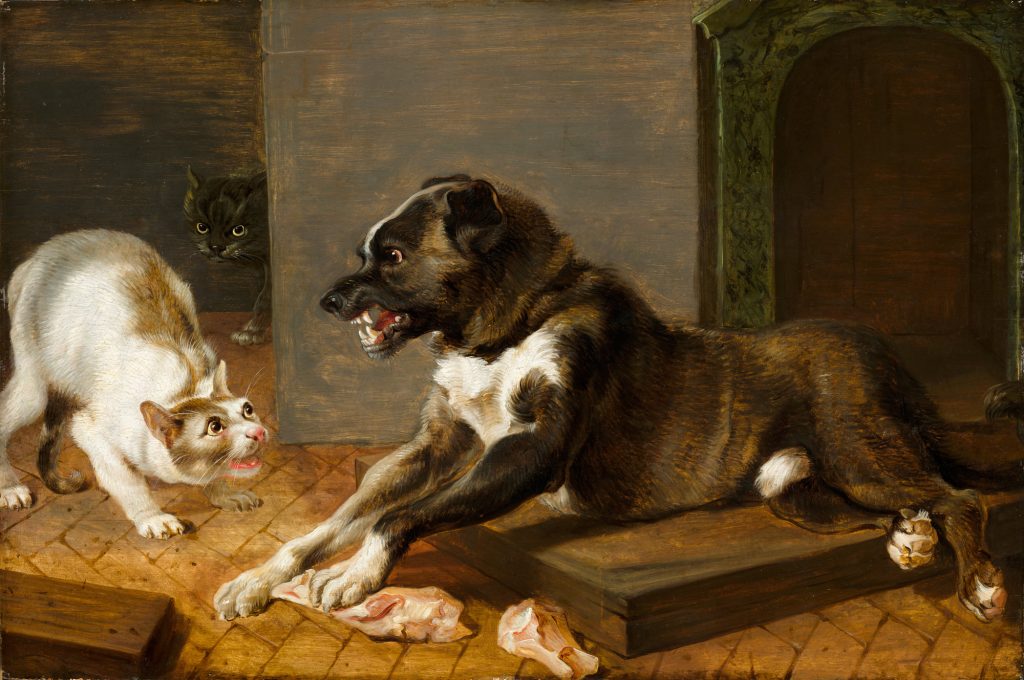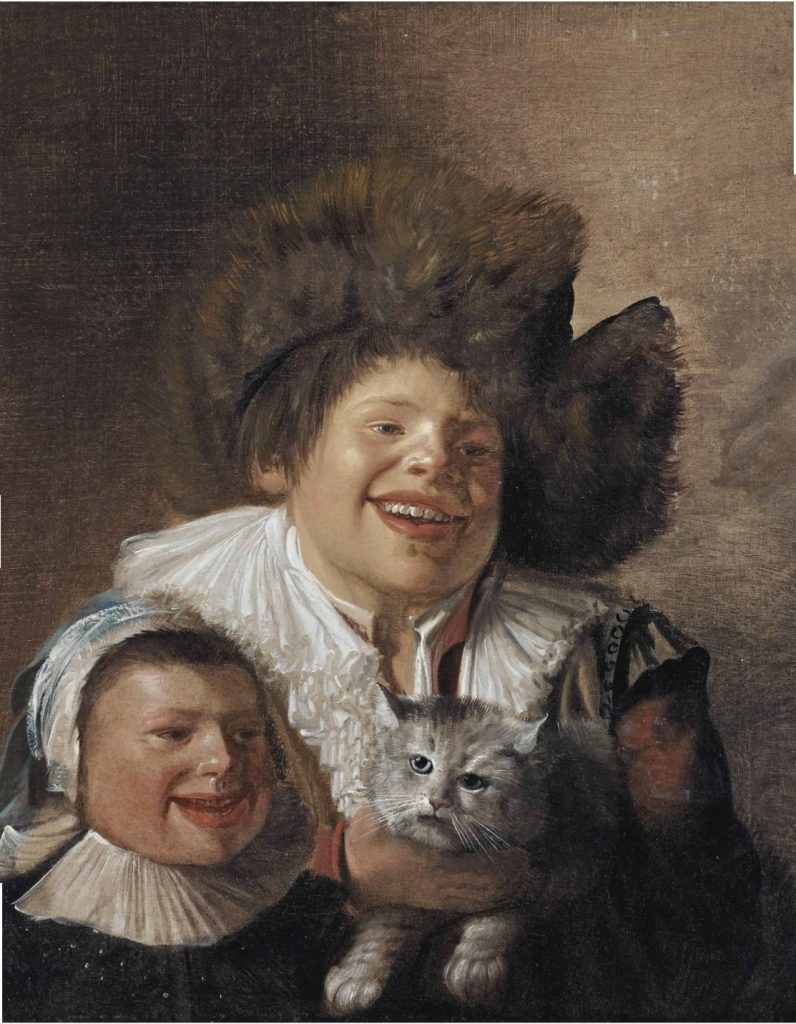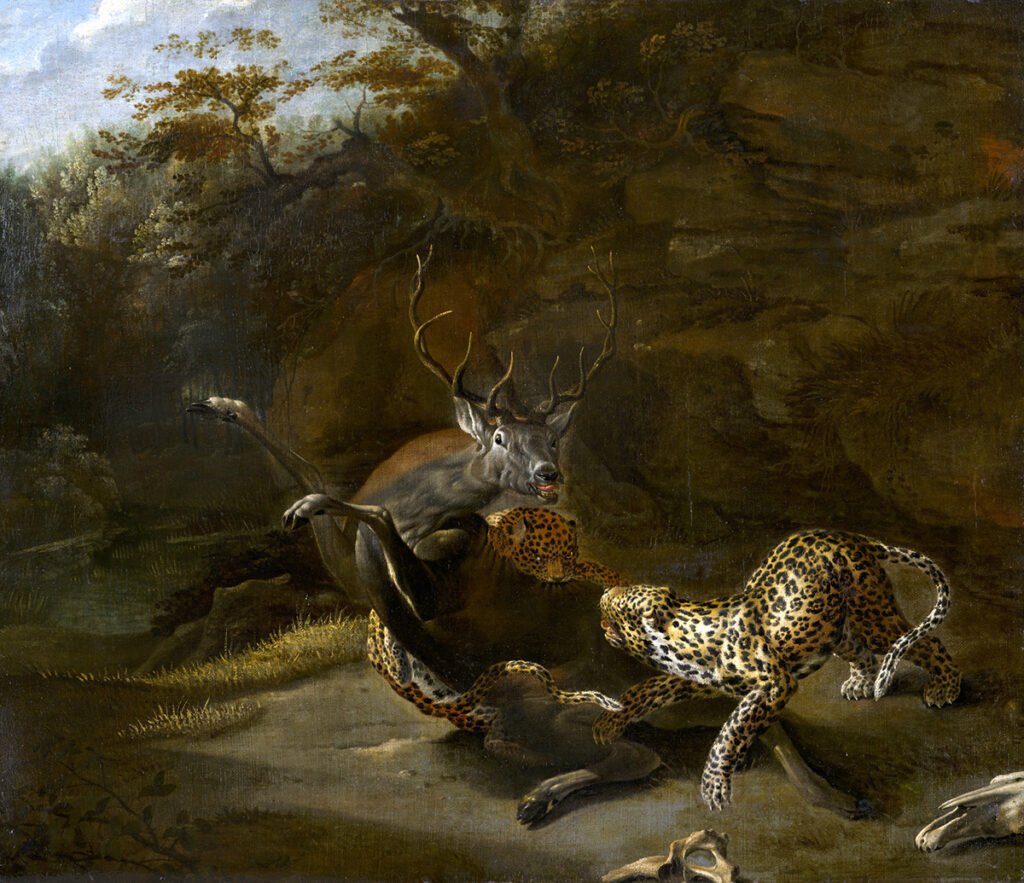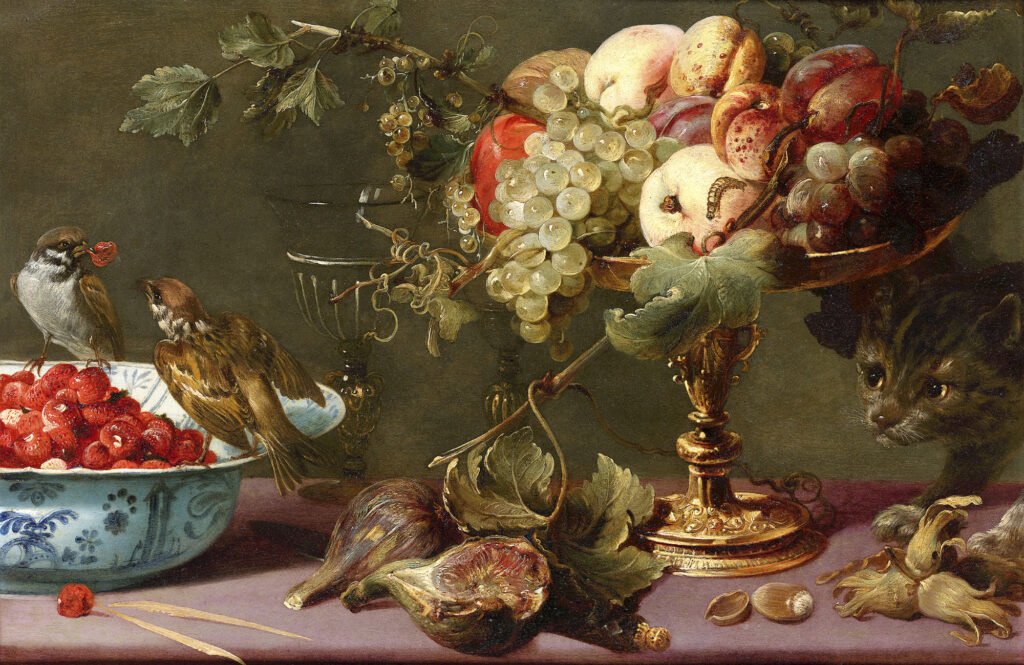Paul de VOS
Dog and Cats
1650s-1660s
Oil on panel, 68x109cm
Paul de Vos was a Flemish painter who is considered one of the greatest masters of still life in the 17th century. His work was immensely popular and was commissioned by princely courts and hunting pavilions. He was the younger brother of Cornelis de Vos, famous portrait painter. He studied in Antwerp with Denis van Hove (in 1604), David Remeus (in 1605) and Frans Snyders (after 1611), master of baroque still life and animal compositions. The works of the latter had a particularly noticeable impact on the composition of the work of Pauvel de Vos. He worked mainly in Antwerp. In 1620 he became a free master of Antwerp and joined the guild of Saint Luke of that city.
De Vos’s work was immensely popular, international fame came to the artist in the early 1630s, when he repeatedly carried out orders from the Flemish and Spanish nobility (Cardinal Infante Ferdinand, Marquis de Leganes, Philippe de Arenberg).
Currently, the works of Paul de Vos are represented in many art collections around the world, such as the Prado, the Louvre, the Hermitage, the Corsini Gallery in Rome, the National Museum in Stockholm, the Museum of Art History in Vienna and others.
The large composition “Dog and Cats” is written with expression and grace. It demonstrates the rivalry between dogs and cats for a piece of meat. Such compositions are traditionally an allegorical allusion to bloodthirstiness, cunning and voluptas carnis – carnal pleasures, vain temptations. The composition is built on the rhythm of curving lines. The artist’s language thus takes on a more decorative character. The artist clearly admires the plasticity of animals, their grace and grace, strength and dexterity. The picture is full of tense dynamics. Cats stalking tempting prey do not take their predatory gaze off their eternal enemy. The dog, feeling its confident superiority, only snarls and carefully guards its trophy. The painting was most likely created during the 1650s or in the first half of the 1660s.
Provenance:
Private collection Berlin
Collection of Art-Life Projekt, Tallinn
Private collection, Switzerland





